1. Casu Marzu – Sardinia, Italy
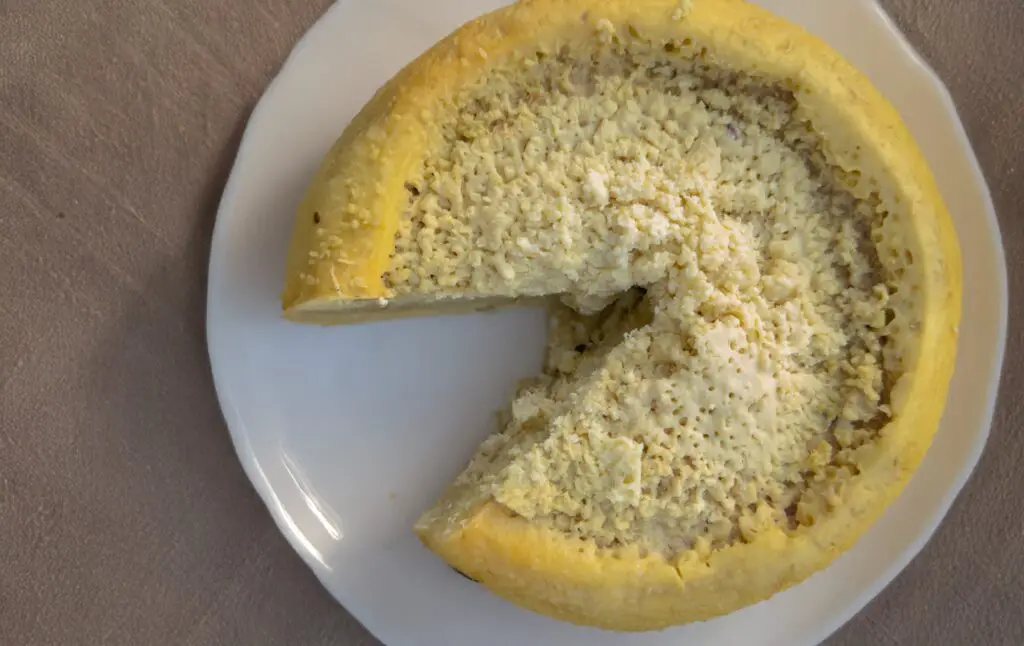
Casu Marzu is a cheese that might challenge your definition of what’s edible. Made in Sardinia, this cheese takes its distinctiveness from the larvae of the cheese fly, which are deliberately introduced into the cheese to aid in fermentation. The maggots soften the cheese, making it almost liquid, and are often eaten alongside it, adding a chewy texture to the creamy cheese. Though the larvae are technically optional for some, they are often considered the hallmark of the true Casu Marzu experience. The cheese has a strong, sharp flavor that can be overwhelming to many, yet it remains a beloved tradition in Sardinia, where it’s considered a delicacy. Casu Marzu has been banned in many countries due to health regulations, but it’s still made and enjoyed by locals, often paired with rustic Sardinian bread and a glass of strong wine.
The process of making Casu Marzu isn’t for the faint-hearted, and the very thought of consuming it may cause hesitation in some. However, for those who dare to try it, the cheese offers an authentic taste of Sardinian heritage. It’s a perfect example of how food can be deeply embedded in culture, offering an unforgettable and challenging culinary experience. Eating Casu Marzu is about more than just food; it’s about embracing a piece of Sardinia’s ancient traditions. It’s not just a meal—it’s an adventure for the taste buds, one that pushes the boundaries of what most would consider acceptable in the world of food.
2. Fugu – Japan
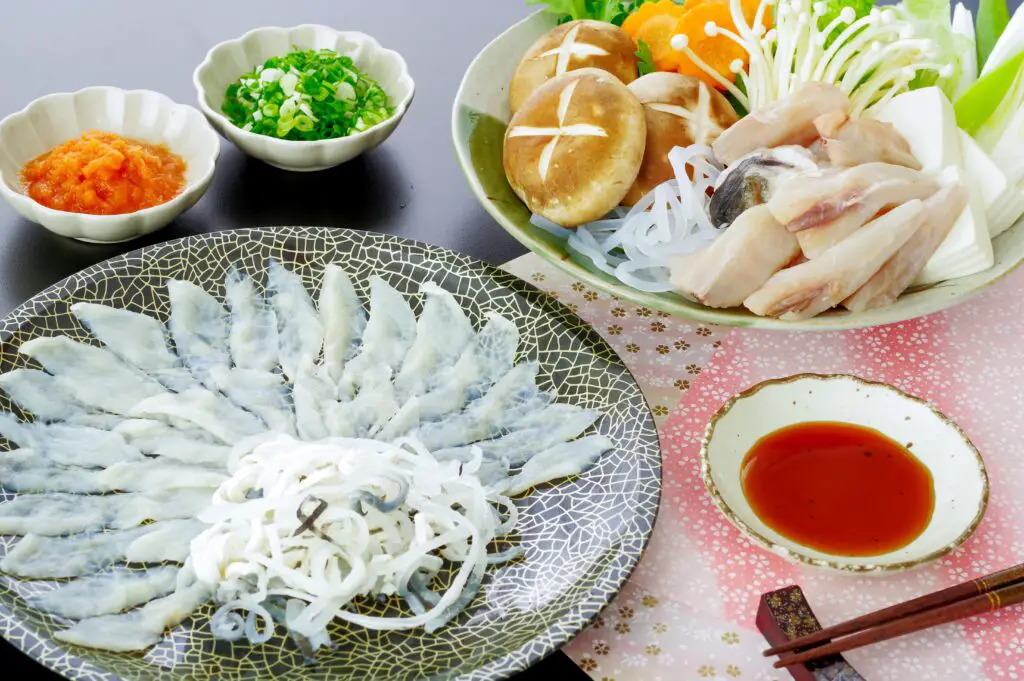
Fugu, or pufferfish, is a dish steeped in both tradition and danger in Japan. Known for its potential to cause poisoning due to the presence of tetrodotoxin, a powerful neurotoxin, Fugu can only be prepared by chefs who are licensed and have undergone extensive training. The preparation of this dish requires skill, precision, and a deep understanding of how to safely remove the toxic parts of the fish, such as the liver and ovaries. The flesh of the pufferfish is delicate and translucent, with a subtle, slightly sweet flavor that makes it a prized ingredient in Japanese cuisine. Fugu is usually served as sashimi, where its paper-thin slices are enjoyed raw with dipping sauces, offering an experience that combines both sophistication and risk.
Despite the potential dangers, Fugu remains a highly sought-after delicacy, especially during special occasions. For many, the thrill of eating something so potentially hazardous adds to its allure. It’s a dish that commands respect and requires trust in the expertise of the chef. Some believe that eating Fugu is a rite of passage in Japanese culture, a daring experience that few other dishes can offer. While there are very few fatalities each year, the legend of Fugu’s danger still keeps it an exclusive and exciting dish for food adventurers. Eating Fugu is as much about the experience as it is about the taste—an adventure for those who seek to live on the edge.
3. Balut – Philippines
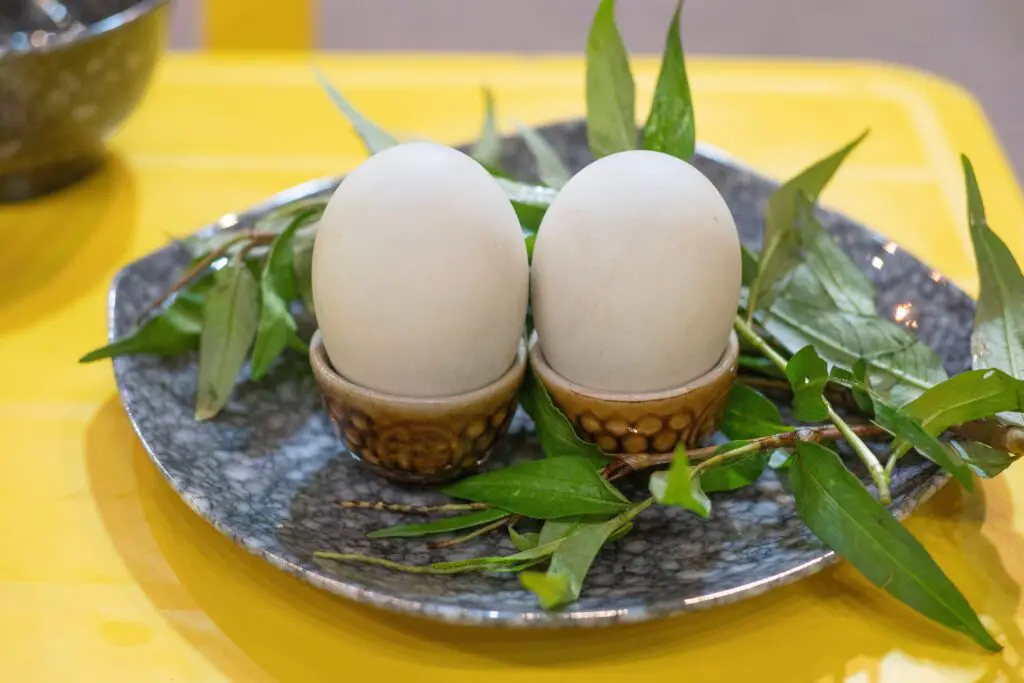
Balut is one of those dishes that divides people based on their willingness to try something unconventional. It’s a fertilized duck egg, typically boiled and eaten with a bit of salt, pepper, and sometimes a splash of vinegar. Inside, you’ll find a partially developed embryo, complete with soft bones, beak, and feathers—something that’s considered a delicacy in the Philippines. The egg is usually served warm, often by street vendors, who make a living selling this snack to those brave enough to try it. Balut’s flavor is rich and savory, with the texture varying between the creamy yolk and the chewy, almost crunchy, embryo. For many Filipinos, it’s a treat that brings back memories of childhood, late-night street food runs, or family gatherings.
Despite its somewhat controversial nature, Balut has been part of Filipino food culture for centuries. It’s seen as a source of protein and is even believed to have aphrodisiac qualities. Eating Balut is a deeply cultural experience, one that’s tied to the Philippines’ history and traditions. It may be unsettling for some, but for those who enjoy it, Balut is more than just food; it’s a nostalgic, comfort snack that connects them to their heritage. Its presence on street corners and at celebrations across the country is a testament to its enduring popularity, even as it continues to baffle and intrigue outsiders. Balut is truly one of those foods that pushes the boundaries of what we consider normal to eat.
4. Hákarl – Iceland
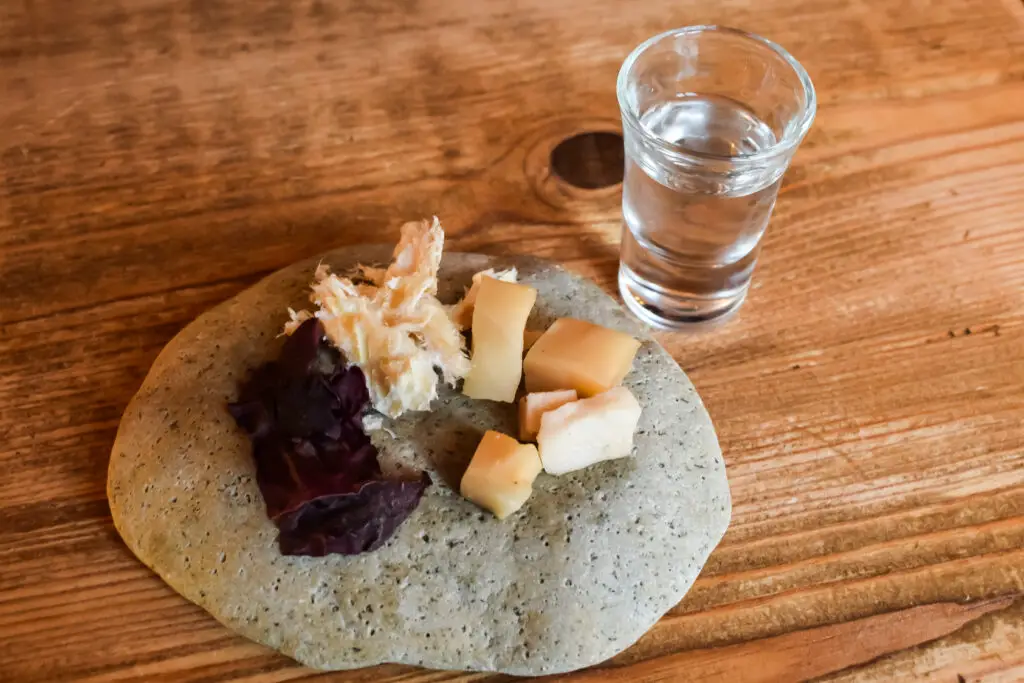
Hákarl, an Icelandic dish made from fermented shark, is not for the faint of heart. The dish is made from the Greenland shark, which is toxic when fresh due to high levels of urea and ammonia. To make it edible, the shark is buried for several months and then hung to dry. The result is a pungent, ammonia-scented food that can be an assault on the senses. The flavor is intensely strong, and the texture can be off-putting to first-timers, but for Icelanders, it’s a cherished food that has been part of their culinary tradition for centuries. Hákarl is often served in small, daring bites, typically paired with a shot of Brennivín, a strong Icelandic schnapps, to help cut through the overpowering taste.
Though it’s often described as one of the most difficult foods to stomach, Hákarl holds a special place in Icelandic culture, especially during the midwinter Þorrablót festival. Locals view it as a necessary rite of passage, one that showcases the resilience of their ancestors who had to make use of every part of the shark to survive the harsh environment. For those who dare to try it, Hákarl is a fascinating example of how food traditions adapt to the environment and history of a place. The dish’s pungency and acquired taste make it a unique experience, one that sets Iceland apart in the world of culinary curiosities. Whether you love it or hate it, Hákarl is undeniably a part of Iceland’s culinary identity.
5. Sannakji – South Korea

Sannakji is a dish that has earned a reputation for being both unsettling and thrilling. It consists of live octopus tentacles, which are sliced and served while still squirming on the plate. The tentacles are lightly seasoned with sesame oil and sprinkled with sesame seeds, but it’s the experience of eating them while they move that makes it so unique. The sensation of the tentacles sticking to your mouth and gums as they wriggle around is an experience that diners either find exhilarating or unsettling. The taste is a mixture of oceanic freshness and a slightly chewy texture that’s unlike anything you’d find in other seafood dishes. Sannakji is often served in Korean restaurants, and its presence on the menu has become an iconic part of the country’s adventurous food scene.
Though it’s a common dish in South Korea, especially for those celebrating special occasions, Sannakji isn’t for everyone. The idea of eating live octopus can be a tough sell for many, and it’s not uncommon to see people hesitating before taking the first bite. However, for those who embrace the challenge, it offers a unique way to connect with Korean culinary traditions. Sannakji is not just a dish but an experience that requires a sense of adventure and a willingness to step outside the bounds of what’s considered typical in many other food cultures. The tradition behind it adds to its allure, making it a must-try for those seeking an unforgettable culinary experience.
6. Durian – Southeast Asia
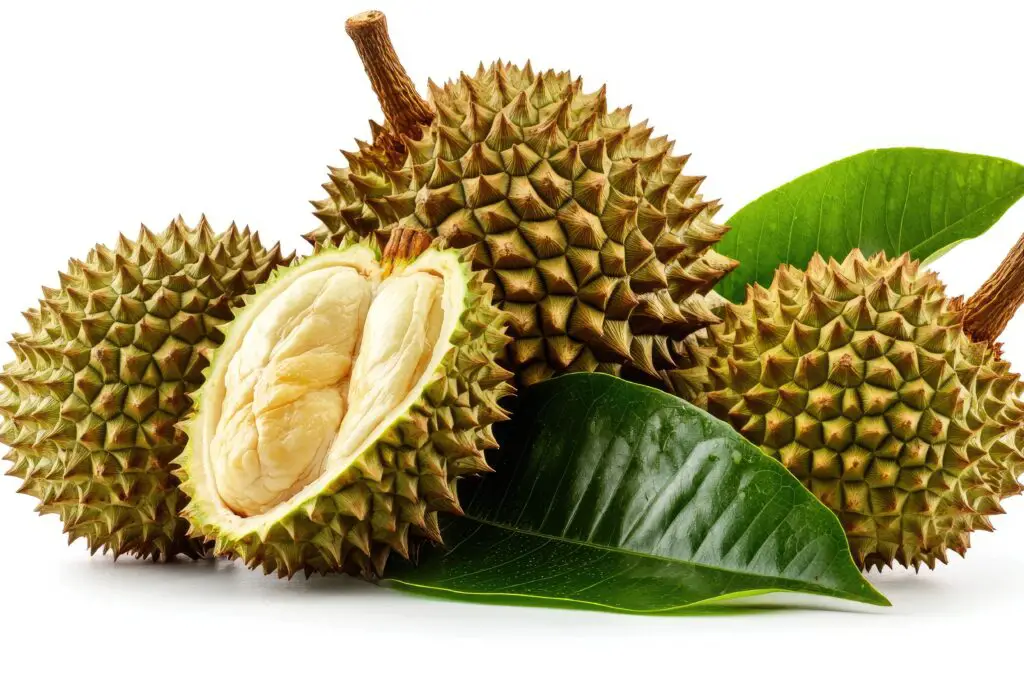
Durian is a fruit that consistently divides opinions due to its pungent odor, which has led to it being banned in hotels, public transport, and many public spaces in Southeast Asia. Known as the “king of fruits,” durian’s strong smell is often compared to rotten onions or even raw sewage, making it one of the most controversial fruits in the world. But despite the smell, durian has a loyal following. The inside of the fruit is rich, creamy, and custard-like, with a flavor that blends sweetness and savory notes. Its texture is smooth, and when ripe, it’s often enjoyed straight from the shell, sometimes chilled or in desserts like ice cream and pastries. For those who enjoy it, durian’s complex flavor profile is a treat that’s unlike any other fruit.
The first experience with durian can be overwhelming due to its scent, but for many in Southeast Asia, it’s a part of their food culture. The fruit is often consumed during festivals and family gatherings, where its bold flavor is appreciated in ways that outsiders may not understand. Durian has a reputation for being both an acquired taste and a fruit that holds nostalgic value for many who grew up with it. Whether you love it or hate it, durian stands as a symbol of Southeast Asia’s vibrant and adventurous food culture, challenging everyone who encounters it to face their food boundaries head-on. Durian’s strong personality makes it impossible to forget, and its presence in local markets is a testament to its undeniable place in regional cuisine.
